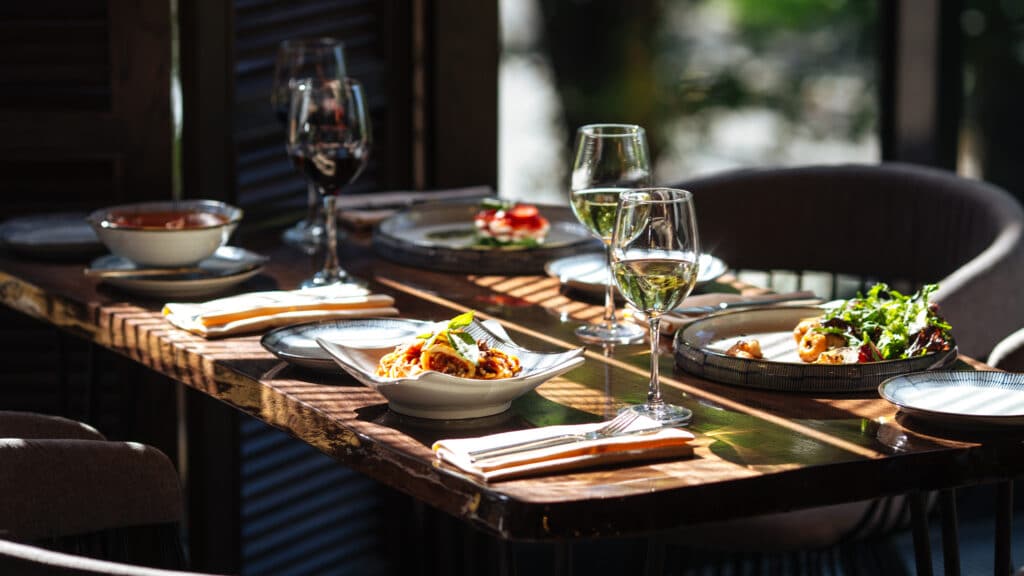Like cooking, the entire restaurant industry balances strength and finesse. Few can break down a 400-pound tuna and turn the loins into perfectly even cubes for Hawaiian poke. Even fewer can run a large restaurant operation while paying close attention to every detail and dollar to ensure it creates incredible guest experiences and growing profits.
With all the uncertainty in supply chains, wholesale prices, and the overall economy, the latter is more important than ever. To truly understand and thrive in any situation, forward-thinking restaurant operators need an integrated Restaurant Enterprise Management ecosystem with tools to conduct accurate, ongoing analyses that help identify and optimize menu items that weigh down margins and profits.
Menu engineering for restaurants guide
The first step is ensuring you have a system integrated with your chosen POS system, enabling your team to collect and provide accurate, dynamic inventory data. With these three pieces in place, managers at the store level and above can get a clear, concise picture of both sales and costs.
This is accomplished by automatically generating the following accounting and performance metrics accurately and regularly: food costs, menu item costs, gross profit per item, and sales percentage. Having these metrics on an ongoing basis is the key to getting a granular, margin-and-profit-focused picture of your menu.
What is menu engineering?
With the ability to calculate and monitor all the metrics surrounding your restaurant, you’re ready to dive into menu engineering. Menu engineering was originally brought to the attention of restaurants in the early 1980s by Professor “Coach” Donald Smith of Michigan State University. Smith created the matrix that categorizes the profitability of dishes and includes Stars: dishes with high margins and high sales; Opportunities: dishes with high sales but less than ideal margins; Puzzles: dishes with high margins but low sales; and the dreaded Dogs: dishes with low sales and low margins that you should seriously consider removing from your menu.
While this analysis can be done manually, it’s risky for any restaurant company. Tracking all the data is a complex, cumbersome task that leaves room for human error and often takes so long that results are unusable. An integrated, automated, and restaurant-specific system can help quickly and regularly sort your entire menu into four categories and reveal improvement opportunities.
Menu engineering also includes the influence of menu item placement and menu design alongside the profitability and popularity of various items. Still, its greatest strength lies in its ability to turn dishes that drag down revenue into winners with little to no perceptible difference to guests while driving operational efficiency across individual locations and entire restaurant companies.
Menu engineering results
It starts with the Opportunities category, which shows high sales but less-than-optimal margins. Here, operators can use actual vs. theoretical analysis to boost margins through various methods. Perhaps ingredients in an individual dish are either prone to waste or being wasted due to carelessness. Theft is another possibility, as is an unaccounted-for shift in vendor prices. An end-to-end system that captures the data of every facet of the business could spot and stop those profit “leaks.”
For Puzzles, managers and operators can explore the many subtle marketing and menu design tools proven to boost sales. These can include increasing a particular item’s placement by putting it within the “Golden Triangle” where guests’ eyes are most likely to go: in the center or upper right corner of your menu. You can also redesign your menu and put more white or empty space around your Puzzle dishes, making them stand out more. Finally, colors are also proven to influence consumer decisions and emotions. Orange, for example, is known to be appetite-stimulating and can encourage impulse menu item selection.
While Stars appear to shine bright, they’re also a category you can’t forget. A Star may be a high performer today, but price changes or consumer preferences could quickly turn them into Puzzles, Opportunities, or even Dogs. It’s important when monitoring your product and sales mix to pay attention to even those items that may be humming along. They’re likely the foundation of your success, and any quick, unexpected shifts could dramatically influence your performance.
Conclusion
As a restaurant owner, operator, or manager, decisions about whether to keep or remove dishes, raise or lower a menu item’s price, change portion sizes or ingredients, and how identify profitable items to increase sales are among the most important ones you will make. These decisions should only come after careful analysis of accurate data from an intelligent system built with a clear understanding of the needs and nuances of the restaurant industry.
With menu engineering, you not only identify and quickly fix or remove potential “dead weight” from your menu, you also get detailed insights into the profit each menu item contributes to your bottom line and how to eliminate across-the-board price increases while learning how to increase prices with little or no customer resistance.
While there is no silver button to push to help restaurant owners and operators instantly and perpetually maximize profits, menu engineering within a restaurant-specific platform that consistently produces data and analysis is the key to ensuring your guests’ experiences and margins are constantly improving.



